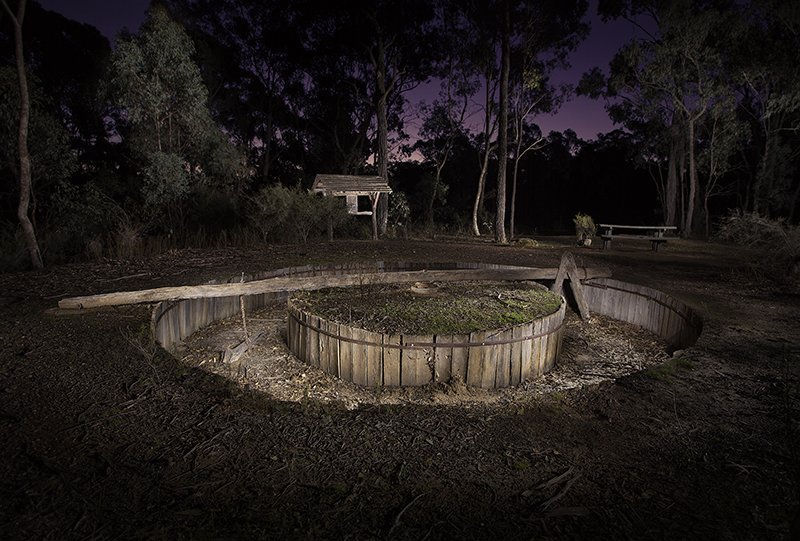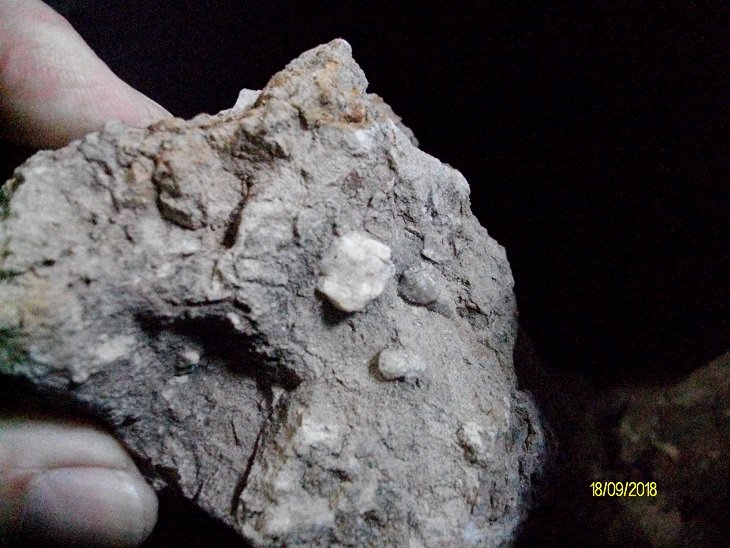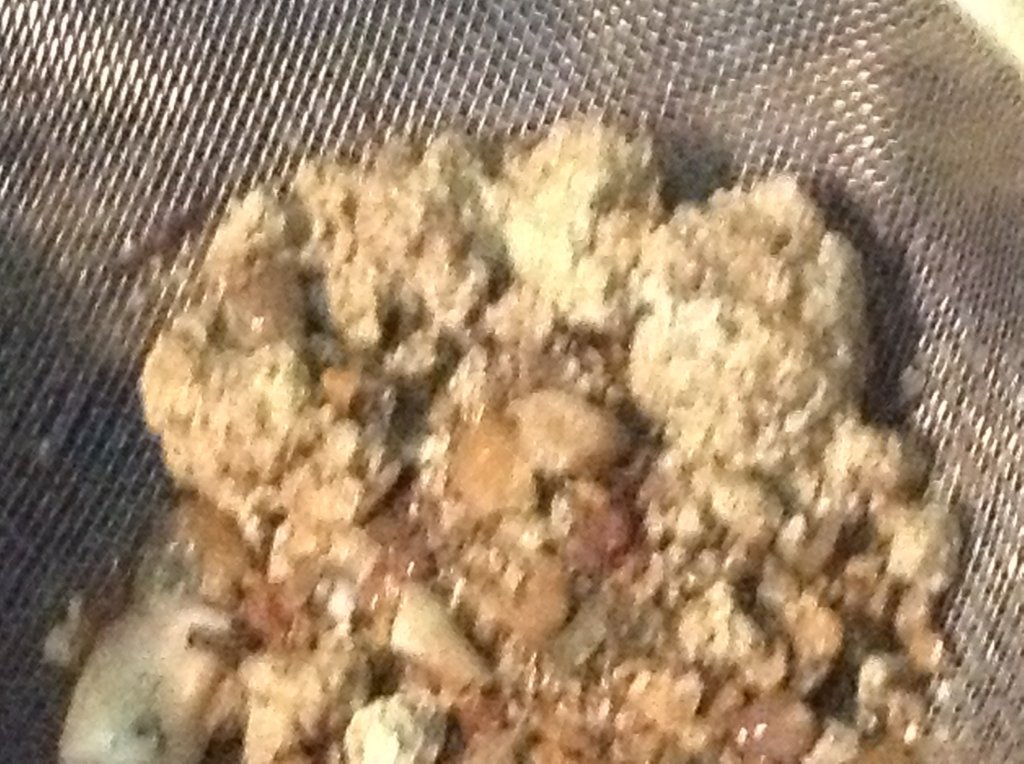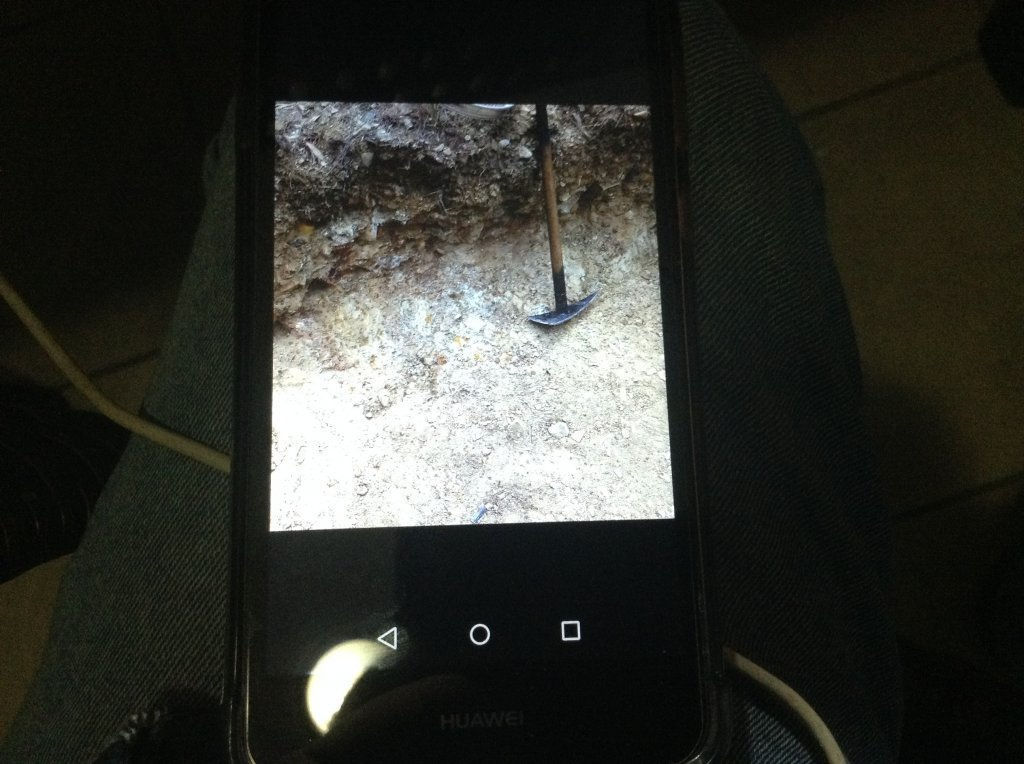You are using an out of date browser. It may not display this or other websites correctly.
You should upgrade or use an alternative browser.
You should upgrade or use an alternative browser.
How to break sticky white clay down
- Thread starter Ward69
- Start date

Help Support Prospecting Australia:
This site may earn a commission from merchant affiliate
links, including eBay, Amazon, and others.
G
Guest
Dry it out on a tarp for a few days in full sun.
Re wet it in a bucket and it should break down much easier.
I ve done this on red clay, presume it works on white?
Lets us know how you get on.
RS
Re wet it in a bucket and it should break down much easier.
I ve done this on red clay, presume it works on white?
Lets us know how you get on.
RS
I have heard hydrogen peroxide and toothpaste works, if it doesn't you can smear the white clay on your teeth and carefully use a butane torch to give yourself nice porcelain veneers  layful: retirement stones ideas are probably more practical though and if you haven't got enough sun you could always bake it in the fire.
layful: retirement stones ideas are probably more practical though and if you haven't got enough sun you could always bake it in the fire.
- Joined
- Apr 5, 2016
- Messages
- 5,694
- Reaction score
- 10,423
If you find away let us all know ..Soak and clasification is the way if your at the creek..I use a board in a bucket of water with ribbed rubber and rub a handful at a time all over the mat..breaks down reasonably quick.....Paint mixer on big drill works pretty good at home :Y:
Interesting idea goldierocksgoldierocks said:I wonder if a bit of gypsum in the bucket with the wet clay would break it down (it works with sticky garden clay but I don't know if it works immediately because I don't stand around to watch :zzz: ). Gypsum is cheap.
SWright
Steve Wright
G'Day
Depending on where you are most clays, unless they contain lots of gravel and bits of bedrock, are simply not worth the effort to breakdown. Any alluvial gold will only be on the very top of pure clay. Also most deposited clays are deposited in super low energy areas of a stream and gold would not be deposited within those clays. If there is coarse gavels on top then the creek as changed direction. Just skim the top of it and run a few test pans. The decaying bedrock clay is a far different deal and it is worth learning your area so you can identify it. For example on Reedy creek many people go to a hell of a lot of trouble breaking down the grey clay and will the majority of the time get zilch. The majority of those clays are old tailing from paddock sluicing or dredges from the old days. You need to get bright orange clay which is crushed and weathered bedrock and if you can find that there are heaps of gems and gold.
Araluen
Depending on where you are most clays, unless they contain lots of gravel and bits of bedrock, are simply not worth the effort to breakdown. Any alluvial gold will only be on the very top of pure clay. Also most deposited clays are deposited in super low energy areas of a stream and gold would not be deposited within those clays. If there is coarse gavels on top then the creek as changed direction. Just skim the top of it and run a few test pans. The decaying bedrock clay is a far different deal and it is worth learning your area so you can identify it. For example on Reedy creek many people go to a hell of a lot of trouble breaking down the grey clay and will the majority of the time get zilch. The majority of those clays are old tailing from paddock sluicing or dredges from the old days. You need to get bright orange clay which is crushed and weathered bedrock and if you can find that there are heaps of gems and gold.
Araluen
Agree completely. In Victoria, alluvial gold would occur up to 30 cm or so into the weathered bedrock clay beneath the gold-bearing gravel, and because cracks in the bedrock provided good gold traps, it could yield significant alluvial gold. Horse-operated circular trenches called "Puddlers" were used to break down this sticky clay to release the gold.SWright said:G'Day
Depending on where you are most clays, unless they contain lots of gravel and bits of bedrock, are simply not worth the effort to breakdown. Any alluvial gold will only be on the very top of pure clay. Also most deposited clays are deposited in super low energy areas of a stream and gold would not be deposited within those clays. If there is coarse gavels on top then the creek as changed direction. Just skim the top of it and run a few test pans. The decaying bedrock clay is a far different deal and it is worth learning your area so you can identify it. For example on Reedy creek many people go to a hell of a lot of trouble breaking down the grey clay and will the majority of the time get zilch. The majority of those clays are old tailing from paddock sluicing or dredges from the old days. You need to get bright orange clay which is crushed and weathered bedrock and if you can find that there are heaps of gems and gold.
Araluen
Anolphart
Zol Straub
There ya go! Just take an old nag to the Whroo puddler ... problem solved!


G
Guest
Beautiful photo!!!!
ken2m
Ken
SWright said:G'Day
Depending on where you are most clays, unless they contain lots of gravel and bits of bedrock, are simply not worth the effort to breakdown. Any alluvial gold will only be on the very top of pure clay. Also most deposited clays are deposited in super low energy areas of a stream and gold would not be deposited within those clays. If there is coarse gavels on top then the creek as changed direction. Just skim the top of it and run a few test pans. The decaying bedrock clay is a far different deal and it is worth learning your area so you can identify it. For example on Reedy creek many people go to a hell of a lot of trouble breaking down the grey clay and will the majority of the time get zilch. The majority of those clays are old tailing from paddock sluicing or dredges from the old days. You need to get bright orange clay which is crushed and weathered bedrock and if you can find that there are heaps of gems and gold.
Araluen
I was up at reedy creek from the 12th to the 16th September, and managed to find a couple of pieces of gravely clay (about 3.3 kg) photo of a small piece follows. Not sure where it was originally found but only found the pieces near the camp site. Ken.

ken2m
Ken
From what I have crushed so far (1/2 cup or a bit less) seems like micron gold, almost impossible to keep in a pan.
And tried the baking and it seems just the same. Ken.
And tried the baking and it seems just the same. Ken.
ken2m said:From what I have crushed so far (1/2 cup or a bit less) seems like micron gold, almost impossible to keep in a pan.
And tried the baking and it seems just the same. Ken.
It is possible to separate fine gold by various electrostatic/electromagnetic methods. but only if you can completely disaggregate the particles (often near impossible). Often clayey gravel was put through a rock crusher when dry. If you had a lot you could chemically leach it.
SWright
Steve Wright
Hi ken2m
That stuff looks like what the old timers up at Reedy called Cement. It is a very old river sediment now cemented into a rock. Needs crushing and washing. The same principle apply to modern sediments. You need to find the old channels. Also more modern terrace material was deposited on top of the cement. It is worth taking a dustpan and small broom and testing the tops of these layers. Its the sticky grey clay at Reedy that you need to avoid. Not only has little or no gold but unless you break it down completely it will form little clay balls in your pan or sluice and pick up the gold and wash it out.
Araluen
That stuff looks like what the old timers up at Reedy called Cement. It is a very old river sediment now cemented into a rock. Needs crushing and washing. The same principle apply to modern sediments. You need to find the old channels. Also more modern terrace material was deposited on top of the cement. It is worth taking a dustpan and small broom and testing the tops of these layers. Its the sticky grey clay at Reedy that you need to avoid. Not only has little or no gold but unless you break it down completely it will form little clay balls in your pan or sluice and pick up the gold and wash it out.
Araluen
Yep, totally correct. Forms small balls. Even after soaking for two weeks. The way I'm doing it sieve it down to 15 mesh. Running the water over the bucket until the clay is half gone. The balls into another bucket, then using a power paint mixer. All the time using finish to stop the fine gold floating, in end running the blue bowl, the bloody stuff comes back, balling up again. I'm getting about 1/2 gram per 30 litre bucket. Lot of fines and little rough pickers. My original question. Was how remove the clay The Malo is about 2to4 cm wide sitting between the clay. Thanks to all for replying. I'm still washing. $)(; clay
- Joined
- May 26, 2018
- Messages
- 385
- Reaction score
- 1,145
Clay is a charged particle, produces a negative charge ie binds together,
the bane of every alluvial gold miner.
Here is a small test you can do.
Roll some clay into a ball, golf ball size,
Place into a jar of clean water,
ideally rain water or distilled water.
Leave the jar over night, don't touch it.
When you check it in the morning, and you
find the water cloudy and the clay ball partially
or wholly dissolved, then the clay is dispersive. go buy a lotto ticket.
If the water is still clear and the clay ball is looking
at you with a smiley face, you up ship creek without
a paddle.
So back to the cloudy water, add Gypsum as Goldilocks suggested,
how much? you will have to experiment.
What happen is the Calcium in the Gypsum releases positive
charged ions (cations) which bond to the negatively charged
ions ( anions) and stops the clay from sicking together. hope it works.
have fun, :rainbow:
the bane of every alluvial gold miner.
Here is a small test you can do.
Roll some clay into a ball, golf ball size,
Place into a jar of clean water,
ideally rain water or distilled water.
Leave the jar over night, don't touch it.
When you check it in the morning, and you
find the water cloudy and the clay ball partially
or wholly dissolved, then the clay is dispersive. go buy a lotto ticket.
If the water is still clear and the clay ball is looking
at you with a smiley face, you up ship creek without
a paddle.
So back to the cloudy water, add Gypsum as Goldilocks suggested,
how much? you will have to experiment.
What happen is the Calcium in the Gypsum releases positive
charged ions (cations) which bond to the negatively charged
ions ( anions) and stops the clay from sicking together. hope it works.
have fun, :rainbow:
Similar threads
- Replies
- 7
- Views
- 3K




